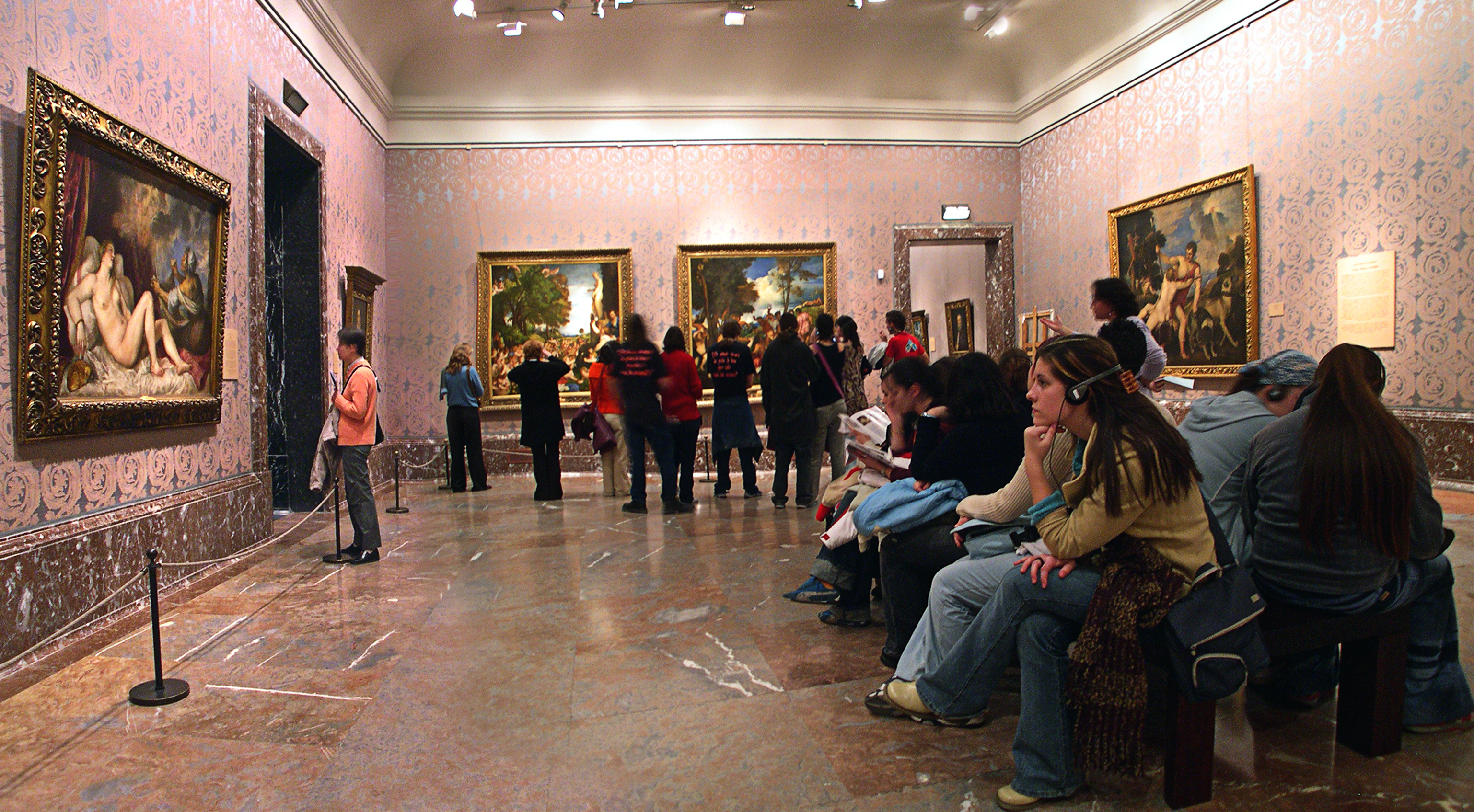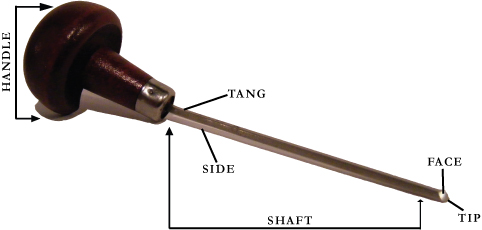|
Portrait Of Jacopo Sannazaro
''Portrait of Jacopo Sannazaro'', also known as ''Portrait of a Man'', is an oil painting by the Venetian master Titian, dated to about 1513.Whitaker; Clayton 2007, p. 188. It is part of the Royal Collection, and hangs in Buckingham Palace. Subject Both the names formerly given to this picture, Giovanni Boccaccio, ''Boccaccio'' and ''Alessandro de' Medici, Duke of Florence, Alessandro de' Medici'', are incorrect.Gronau 1904, p. 43. The sitter is now thought to be Jacopo Sannazaro, a poet and humanist from Naples. This identification was first proposed by Georg Gronau in 1895, and is supported by an early copy of the painting (Walker Art Gallery, Liverpool) inscribed ''Sincerus Sannzarius'' ("Actius Sincerus" was a known alias of Sannazaro). History The portrait has been dated variously from to the early 1520s. The style of the sitter's clothing and hair suggest a date closer to 1513; certainly before 1520. According to Gronau, "It has in style its companion in the ''Port ... [...More Info...] [...Related Items...] OR: [Wikipedia] [Google] [Baidu] |
Titian
Tiziano Vecelli or Vecellio (; 27 August 1576), known in English as Titian ( ), was an Italians, Italian (Republic of Venice, Venetian) painter of the Renaissance, considered the most important member of the 16th-century Venetian school (art), Venetian school. He was born in Pieve di Cadore, near Belluno. During his lifetime he was often called ''da Cadore'', 'from Cadore', taken from his native region. Recognized by his contemporaries as "The Sun Amidst Small Stars" (recalling the final line of Dante Alighieri, Dante's ''Paradiso (Dante), Paradiso''), Titian was one of the most versatile of Italian painters, equally adept with portraits, landscape backgrounds, and mythological and religious subjects. His painting methods, particularly in the application and use of colour, exercised a profound influence not only on painters of the late Italian Renaissance, but on future generations of Art of Europe, Western artists. His career was successful from the start, and he became sought ... [...More Info...] [...Related Items...] OR: [Wikipedia] [Google] [Baidu] |
Gerard Reynst
Gerard Reynst (1560s – 7 December 1615) was a Dutch merchant and later the second Governor-General of the Dutch East Indies. Biography All that is known of his early years is that he was born in Amsterdam, the son of Pieter Rijnst (ca.1510–1574), soap Boiler from the later patrician Reynst family, and Trijn Sijverts. In 1588 he married Margrieta Nicquet and bought a house in Amsterdam from his older brother Reijnst. In 1599, as a merchant and ship-owner, he became a founder-member and administrator of the Nieuwe or Brabantsche Compagnie which, in 1600, became the Vereenighde Company of Amsterdam. This company then in 1602 merged into the Dutch East India Company (VOC). On the request of his elders in the college of the Heren XVII (17 men), he became Governor-general of the Dutch East Indies in 1613 and left with 9 ships. The trip lasted 18 months, after which he took over command from Pieter Both. On the way, he had already sent one of his ships to the Red Sea to start trad ... [...More Info...] [...Related Items...] OR: [Wikipedia] [Google] [Baidu] |
Portraits By Titian
A portrait is a painting, photograph, sculpture, or other artistic representation of a person, in which the face and its expressions are predominant. The intent is to display the likeness, personality, and even the mood of the person. For this reason, in photography a portrait is generally not a snapshot, but a composed image of a person in a still position. A portrait often shows a person looking directly at the painter or photographer, in order to most successfully engage the subject with the viewer. History Prehistorical portraiture Plastered human skulls were reconstructed human skulls that were made in the ancient Levant between 9000 and 6000 BC in the Pre-Pottery Neolithic B period. They represent some of the oldest forms of art in the Middle East and demonstrate that the prehistoric population took great care in burying their ancestors below their homes. The skulls denote some of the earliest sculptural examples of portraiture in the history of art. Historical portraitur ... [...More Info...] [...Related Items...] OR: [Wikipedia] [Google] [Baidu] |
Dutch Gift
The Dutch Gift of 1660 was a collection of 24 mostly Italian Renaissance paintings, four by Dutch Masters, and twelve classical sculptures. The gift was presented to newly-restored King Charles II of England on 16 November by envoys of the States of Holland. Most of the paintings and all the Roman sculptures were from the Reynst collection, the most important seventeenth-century Dutch collection of paintings of the Italian sixteenth century, formed in Venice by Jan Reynst (1601–1646) and extended by his brother, Gerrit Reynst (1599–1658). The gift reflected the taste Charles shared with his father, Charles I, whose large collection, one of the most magnificent in Europe, had mostly been sold abroad after he was executed in 1649. Charles II was not as keen a collector as his father, but appreciated art and was later able to recover a good number of the items from the pre-war collection that remained in England, as well as purchasing many further paintings, and many sig ... [...More Info...] [...Related Items...] OR: [Wikipedia] [Google] [Baidu] |
List Of Works By Titian
This incomplete list of works by Titian contains representative portraits and mythological and religious works from a large oeuvre that spanned 70 years. (Titian left relatively few drawings.) Painting titles and dates often vary by source. List of works by year References {{Lists of paintings Lists of works of art, Titian Paintings by Titian, * Portraits by Titian, * ... [...More Info...] [...Related Items...] OR: [Wikipedia] [Google] [Baidu] |
Caterina Piotti-Pirola
Caterina is a feminine given name which is an Italian and Catalan form of the name ''Katherine''. Notable people with the name include: In music: * Caterina Assandra, Italian composer and Benedictine nun * Caterina Bueno, Italian singer and folk music historian * Caterina Caselli, Italian singer, actress and music producer * Caterina Cavalieri, Austrian soprano * Caterina Jarboro, pioneering African American opera singer * Caterina Valente, Italian-born singer, dancer, and actress In education: * Caterina Mieras, teacher at the Teacher Training School of the Balearic Islands In acting: * Caterina Murino, Italian actress * Caterina Scorsone, Canadian actress In sports: * Kateřina Baďurová, Czech pole vaulter * Kateryna Bondarenko, Ukrainian tennis player In other fields: * Caterina Appiani, lady of Piombino * Caterina Consani, Italian mathematician * Caterina dei Virgi, aristocratic Bolognese woman raised in the court of Bologna * Caterina Fake, American businesswoman and ... [...More Info...] [...Related Items...] OR: [Wikipedia] [Google] [Baidu] |
Chalcography
Engraving is the practice of incising a design onto a hard, usually flat surface by cutting grooves into it with a Burin (engraving), burin. The result may be a decorated object in itself, as when silver, gold, steel, or Glass engraving, glass are engraved, or may provide an Intaglio (printmaking), intaglio printing plate, of copper or another metal, for printing images on paper as prints or illustrations; these images are also called "engravings". Engraving is one of the oldest and most important techniques in printmaking. Wood engraving is a form of relief printing and is not covered in this article, same with rock engravings like petroglyphs. Engraving was a historically important method of producing images on paper in artistic printmaking, in mapmaking, and also for commercial reproductions and illustrations for books and magazines. It has long been replaced by various photographic processes in its commercial applications and, partly because of the difficulty of learning th ... [...More Info...] [...Related Items...] OR: [Wikipedia] [Google] [Baidu] |
Giuseppe Longhi
Giuseppe Longhi (13 October 1766 – 12 January 1831) was an Italian engraver and writer. Biography Longhi was born in Monza, and initially trained at the Ambrosian Seminary, studying philosophy and letters. By the age of 20, he decided to become an artist, and trained with the engraver Vincenzio Vangelisti. He also trained with Domenico Aspari, Aspari, Giulio Traballesi, Traballesi, and Franchi. He moved to Rome. He returned to Milan to teach engraving at the Brera Academy. Longhi produced a notable engraving of Napoleon in 1797. The following year he became a professor of engraving at the Brera Academy. In 1801 Longhi visited Paris, where he met many artists, including Jacques-Louis David and Nicolas-Henri Tardieu. Among Longhi's works are engravings of the ''Marriage of the Virgin'' (original by Raphael Sanzio, Raphael) and a ''Mary Magdalene'' by Antonio Allegri, Correggio. He is said to have died from a stroke while engraving the ''Last Judgement'' by Michelangelo. Among hi ... [...More Info...] [...Related Items...] OR: [Wikipedia] [Google] [Baidu] |
Giovita Garavaglia
Giovita Garavaglia (18 March 1790 in Pavia, Region of Lombardy – 27 April 1835 in Florence) was an Italian engraver. Biography Initially a pupil of Pietro Anderloni, whom he helped engrave the medical depictions of Antonio Scarpa, he later worked with Giuseppe Longhi in the engravings of the ''Erodiade'' by Bernardino Luino, ''The Holy Family'' by Raphael, and a ''Portrait of Charles''. He moved to Florence to work with the lithographer , engraving the ''David'' found at the Palazzo Pitti and originally painted by Guercino; a ''Child Jesus'' by Carlo Maratta, a ''Jacob'' by Appiani, and the '' Madonna della seggiola''. He engraved the ''Magdalen'' by Carlo Dolci, and a ''Madonnina'' by Villardi, the painting of Beatrice Cenci by Guido Reni. With the death of Morghen, the Grand Duke Ferdinand III of Tuscany named Garavaglia director of the Academy of Fine Arts of Florence The Accademia di Belle Arti di Firenze ("academy of fine arts of Florence") is an instruction ... [...More Info...] [...Related Items...] OR: [Wikipedia] [Google] [Baidu] |
Burin (engraving)
A burin ( ) is a steel cutting tool used in engraving, from the French ''burin'' (cold chisel). Its older English name and synonym is graver. Etymology The term ''burin'' refers to a tool used by engravers that has a thin, pointed blade and it used to etch or cut. The first known use of the word dates back to France in the mid-1600s when the term was coined for the tool we know today. Design The burin consists of a rounded handle shaped like a mushroom, and a tempered steel shaft, coming from the handle at an angle, and ending in a very sharp cutting face. The most ubiquitous types have a square or lozenge face, a high-end repertoire has many others. A tint burin consists of a square face with teeth, to create many fine, closely spaced lines. A stipple tool allows for the creation of fine dots. A flat burin consists of a rectangular face, and is used for cutting away large portions of material at a time. The earliest uses of a burin come from the Lower Paleolithic era, t ... [...More Info...] [...Related Items...] OR: [Wikipedia] [Google] [Baidu] |
Cornelis Van Dalen II
Cornelis is a Dutch form of the male given name Cornelius. Some common shortened versions of Cornelis in Dutch are Cees, Cor, Corné, Corneel, Crelis, Kees, Neel and Nelis. Cornelis (Kees) and Johannes (Jan) used to be the most common given names in the Low Countries, and the origin of the term Yankees is commonly thought to derive from the term Jan-Kees for the Dutch settlers in New Netherland. Among the notable persons named Cornelis are: * Cornelis Engebrechtsz (c. 1462–1527), painter from Leiden * Cornelis Massijs (c. 1508–1556), painter from Flanders, Belgium * Cornelis Floris de Vriendt (1513/14-1575), architect and sculptor * Cornelis Cort (c. 1533–1578), engraver and draughtsman * Cornelis Corneliszoon (c. 1550–1607), inventor of the wind powered sawmill * Cor Dillen (c. 1920–2009), director of Philips and their CEO in South America * Cornelis van Haarlem (1562–1638), leading Northern Mannerist painter * Cornelis de Houtman (1565–1599), explorer who start ... [...More Info...] [...Related Items...] OR: [Wikipedia] [Google] [Baidu] |



_-_Google_Art_Project.jpg)


